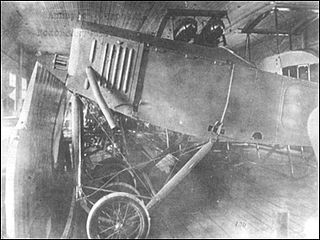
The Aero A.200 was a sportsplane of Czechoslovakia, designed and built specifically to compete in Challenge 1934, the European touring plane championships. It was a four-seater low-wing monoplane.
The Preiss RHJ-8 is a homebuilt side-by-side two-seat flapped glider. It is an evolution of the Preiss RHJ-7, which was developed from a Schreder HP-14. The wingspan was slightly increased and the empennage was changed to a T-configuration, with the stabilator mounted atop the vertical stabilizer. The undercarriage is partially retractable and the large canopy swings open to the rear.
The Preiss RHJ-9 is an evolution of the RHJ-7 and RHJ-8 side-by-side two-seat flapped homebuilt gliders. The wingspan was increased to 18.29 m and the maximum mass was raised to 500 kg. A wing construction similar to that of the later HP-18 was adopted employing foam ribs bonded to the aluminum spars and skins. It first flew in 1978.
The Auster Avis was a four-seat light aircraft developed from the Auster Autocrat. It featured a redesigned fuselage incorporating four doors and a circular cross-section towards the tail, new undercarriage, and new wing flaps. It was planned in two versions, the Mk 1 for civil use, and the Mk 2 for military and air ambulance duties. However, only two prototypes were built, and Auster abandoned the project in favour of the Auster J-5 Autocar.
The Fisher Boomerang is a single-seat conventional landing gear, high-winged monoplane ultralight aircraft designed by Michael Fisher and introduced in mid-1982.

The Akaflieg Berlin B13 is a two-seat motor-glider designed and built in Germany.

The Rans S-12 Airaile is a family of related American single-engined, pusher configuration, high-wing monoplanes designed by Randy Schlitter and manufactured by Rans Inc. The aircraft are available in kit form for amateur construction.
The Schreder Airmate HP-9 is an American high wing, single seat glider that was designed by Richard Schreder and intended to be flown by the designer in the 1960 World Gliding Championships.
The Schreder HP-19 is an American, high-wing, T-tail, single seat glider designed by Richard Schreder.
The Pottier P.220S Koala is a French two-seat light homebuilt aircraft and built by Avions Pottier. Further three and four seat variants were also developed.

The ProFe D-8 Moby Dick is a family of Czech pusher configuration, parasol wing, strut-braced, V-tailed, motor gliders that was designed and produced by ProFe. The aircraft is named for the great white whale of Herman Melville's novel of the same name and was supplied as a kit for amateur construction.
The Seahawk Condor is an American ultralight aircraft that was designed by Buddy Head, Bob Carswell and Dave French and produced by Seahawk Industries and later by Condor Aircraft. The aircraft was supplied as a kit for amateur construction.
The Worldwide Ultralite Spitfire is an American ultralight aircraft that was designed by Fred Bell and manufactured by Worldwide Ultralite Industries and later by Don Ecker and Air Magic Ultralights of Houston, Texas. The aircraft was supplied as a kit for amateur construction.
The Ikarus C52 is a German ultralight aircraft, designed and produced by Comco Ikarus, introduced at the Aero show held in Friedrichshafen in 2011. The aircraft is supplied as a complete ready-to-fly-aircraft.
The Pro-Composites Vision is an American amateur-built aircraft, designed by Steve Rahm and produced by Pro-Composites of Buffalo Grove, Illinois. The aircraft is supplied in the form of plans for amateur construction, with some pre-formed parts made available to speed construction.

The Yuneec EViva is a Chinese low-wing, two-seat motor glider that was designed by Martin Wezel is now under development by Yuneec International of Kunshan, Jiangsu.

The Bede BD-12 was an American homebuilt aircraft designed by Jim Bede and produced by Bede Aircraft of Medina, Ohio, introduced in the 1990s. The aircraft was intended to be supplied as a kit for amateur construction, but only one was ever built.

The InterPlane Starboy was a proposed Czech homebuilt aircraft designed by InterPlane Aircraft of Zbraslavice. The aircraft was intended to be supplied as a complete ready-to-fly-aircraft or as a kit for amateur construction, but none seem to have been built.
The V-STOL Pairadigm is an American twin-engine center-line thrust STOL homebuilt aircraft that was designed and produced by V-STOL Aircraft Corporation of Fort Myers, Florida, introduced in the late 1990s. When it was available the aircraft was supplied as a kit for amateur construction.

The Sikorsky S-17 was a Russian single engine aircraft built at the Russian Baltic Railroad Car Works in Petrograd while Igor Sikorsky was the chief engineer of the aircraft manufacturing division.









